Hyun De Grande on lensing Assisen
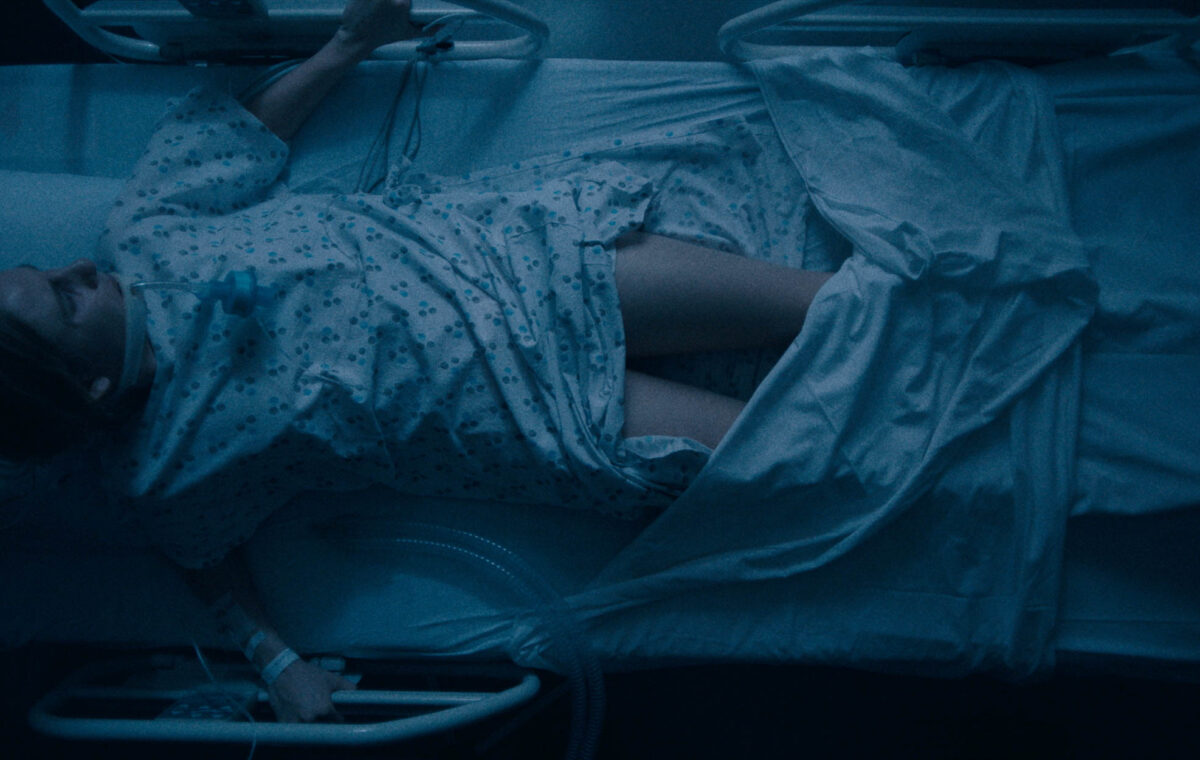
Assisen is an interactive courtroom drama/thriller where the audience is the jury. Directed by Lenny Van Wesemael and Frank van Mechelen, season one centers around a murder in a ballet dancing academy. Van Mechelen returned as sole director on season two, which explores a grandfather sentenced for the murder of his granddaughter and is set in the world of competitive horse-jumping. Both seasons were expertly shot by DP Hyun De Grande. The series also boasts an impressive ensemble cast and is available to watch on Play4.
De Grande attended secondary school in Brugge. “The school offered a new film and photography course which sounded interesting, so I applied for that course,” says De Grande. “Afterwards I went to KASK Film School in Ghent. It was everything in one course, but with the main focus on directing. I did that for two years and then I quit because during that course I realised I was more interested in the cinematography side of filmmaking. In the first semester of the second year, we had to do an exercise with the whole class where we each had to make a film that we had to direct. We also had to do all the different roles on set, like cinematography, sound and everything. I really enjoyed being the cinematographer in that exercise and I decided that I wanted to specialise in that. Then I switched to a three-year cinematography specialised course at RITCS in Brussels. The first year was very theoretical, but then it was much more practical and involved more internships and exercises. So, that’s how I enrolled into the cinematography side.”
De Grande is particularly fascinated with uses of colour in cinematography and looks to Vittorio Storaro, Christopher Doyle and Robby Müller as inspirations. “I really like Storaro’s work because he has a lot of theories and philosophies and clear ideas about how colour can be used in cinematography, emotionally, aesthetically, philosophically and in other ways. I also think his lighting is quite expressive. He uses a lot of hard light which I think is interesting. Christopher Doyle also uses a lot of colour, but in a very different way compared to Storaro. Much more neon-based.” says De Grande. “He has a rawness and poetry to his work, which has some sort of energy that I associated specifically with his work and that I really like. Also, of course the work of Deakins because of his very pure and clean style.”
“I enjoy working with colour myself, depending on the project,” adds De Grande. “I enjoy it because for me it doesn’t always have to be natural. Sometimes I go a bit extreme as well in colour use. Then when I see Storaro, Muller, or Doyle do similar things, to go away from the naturalistic path and I find that inspiring. I like the work of Vilmos Zsigmond too, because he uses a lot of hard light as well and his style is also very expressive. I saw an interview where he says he’s not a fan of soft light, which is more the style of recent cinema. I like his look because I find it quite daring to use very hard light sometimes, for example in Close Encounters of The Third Kind. I like styles that are a bit more out there and expressive in a way.”
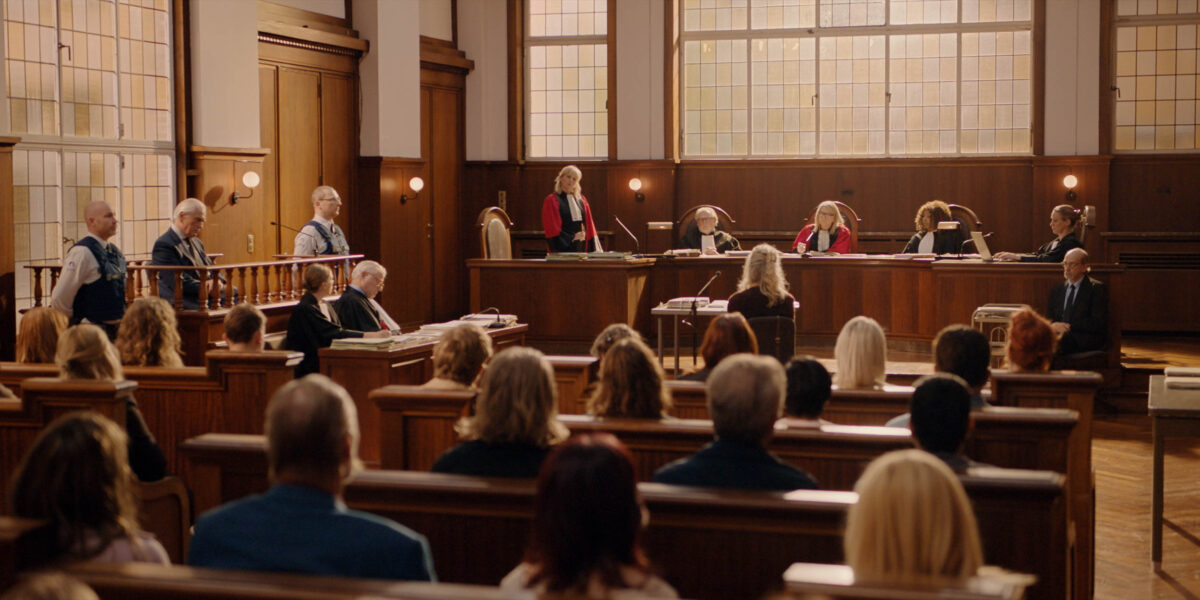
In February 2022, De Grande got a call from director Lenny Van Wesemael asking if he was interested in shooting Assisen. “There were two directors for the first season. Frank van Mechelen was the other director, who later also directed season two,” details De Grande. “They wanted to meet me. So, I went for an interview and I met both of them. That’s how I got in touch with them. I did season one and then Lenny decided she wasn’t going to do season two. Frank did the whole season and so he asked me again to collaborate on the second season. I hadn’t worked with either of them before season one, but I of course knew who they were because of their work. I’ve been on one of Frank’s sets early on while I was still an intern, so I knew Frank a little bit from that.”
Initial conversations with Frank and Lenny were quite brief. “They were mainly general conversations about how I like to approach things as a cinematographer and how I like to work and styles I like to do. It was more general aesthetic questions. The conversations for the visual aesthetics for the show itself came later. It was basically to see if I’d be suited to the job,” notes De Grande.
During this early stage of production, De Grande only received the treatments and didn’t look at any specific visual references. “Usually, I wait until I read scripts before I look for some visual references. Even though it’s an early version of the script, it gives me chance to see what the general vibe is of the story and what the locations are more or less. Once I’ve read the first version of the script, then I start looking for the references more specifically. During initial conversations I didn’t have any references yet.”
De Grande opted to shoot season one using the Alexa Mini. “We used two different lenssets for three different time periods in the show,” he says. “I initially wanted to blend three types of lenses but that didn’t work out financially, so we reduced it to two sets of lenses: one for the two flashback periods and one for the present. Those were the vintage Super Baltars, vintage American lenses from the 60s that were used on lots of Hollywood films. They have a very interesting vintage look and so I used those for the two main flashback periods and combined them with Leica Summicron lenses, which are very clean, modern lenses. Those were for the present time in court.”
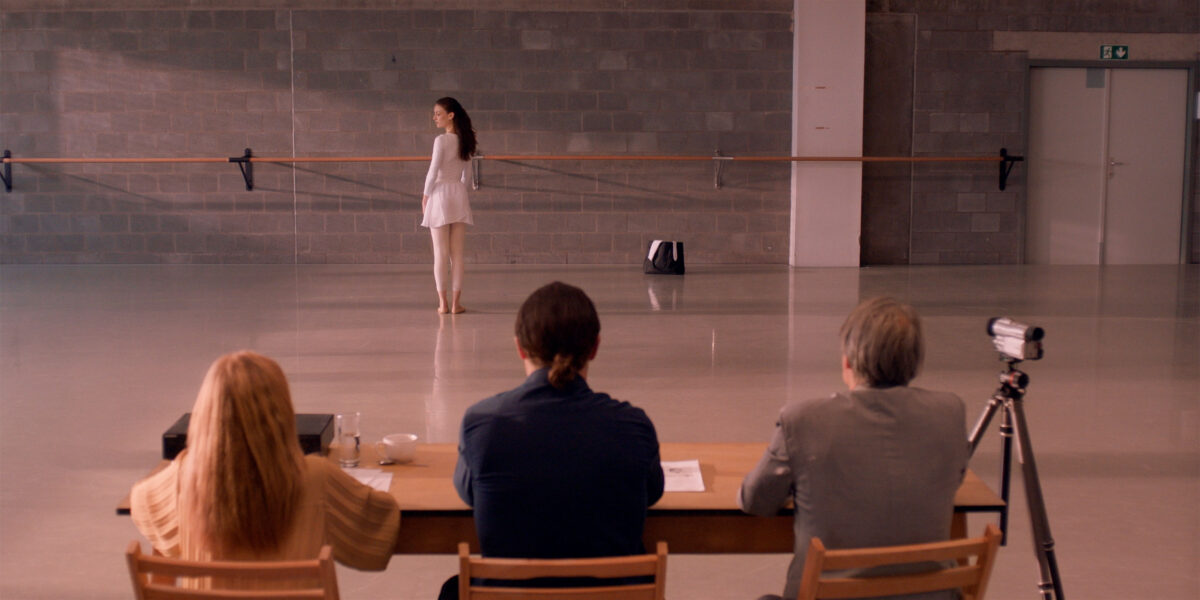
“We had three time periods in season one,” De Grande continues. “The present time is not only court, but also some other scenes throughout the show, mainly in episode 7, which shows how the storylines continue after the court verdict. One of the very early flashbacks when the main character is at the peak of her career as a dancer and everything is going well for her. The other flashback period was more recent, which was the year of the murder. That’s where her career was put more to the side and there is another girl taking her spot. For the first one, I wanted to make a use of pinkish, blueish tones and a bit more of a colourful and happier vibe, also with harder light. I was looking at references from the 90s that also used harder light, but still I wanted a bit of soft contrast. The night scenes were very blue moonlight, not necessarily realistic and a little bit more artificial. Eyes Wide Shut was a big reference for this specific type of deep blue moonlight. That was the first look. The second time period was a little dirtier. It was based on green and yellow colour tones. I chose greens based on the feeling of jealousy and envy, that I wanted to use in that palette. The lighting was a bit more practical light based. The night scenes from that period were mainly based on green Mercury Vapor and orange Sodium street lights instead of blue moonlight. We didn’t use moonlight at all for that period. It was a different approach. That was the idea I had for season one. The present was much more neutral in colour tones.”
De Grande worked with colourist Nicolas Duval during prep for both seasons. “I showed him the mood board and of course he knew about the concept of the three time periods, so we made three LUTs for the set. We also fine-tuned those on different moments during the prep. It was very nice working with him in that way because the looks were very distinct during the shoot, which was useful for art direction and the director. There was also lots of dialogue between the art department and costume and knowing which colours to use and which colours not to use in each time period. For example, we avoided the yellows and mainly the greens in the first time period specifically because those were the main colours for the second period and we didn’t want to confuse the audience.”
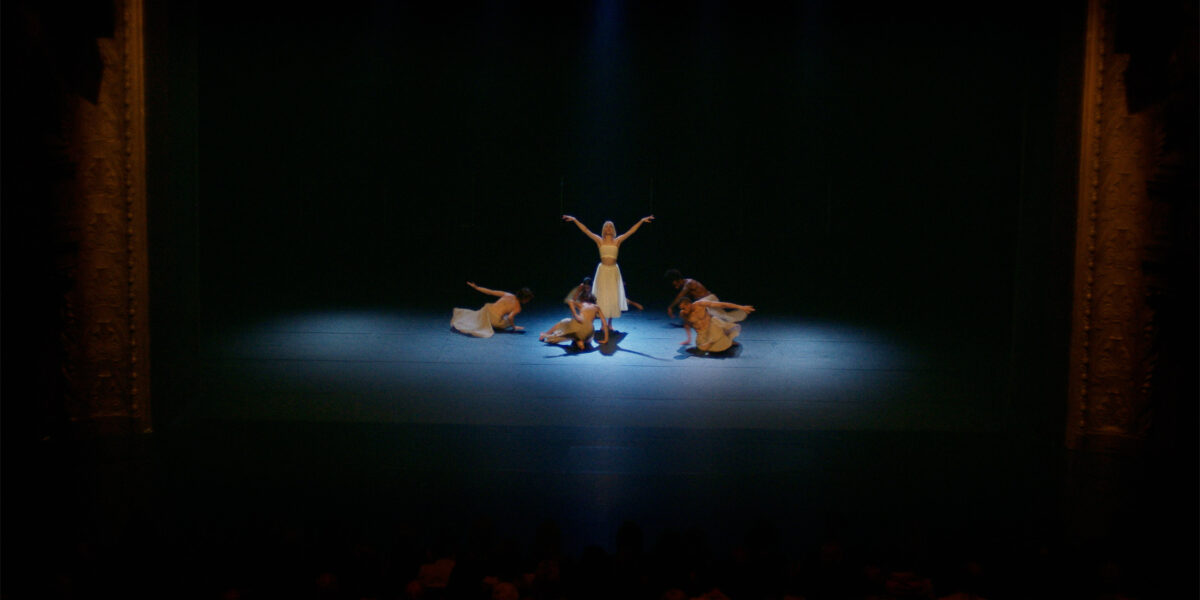
A challenging scene to capture in season one was the dance performance of the second main character, which is a whole show in episode 8. “That was almost like a short film on its own because you have a dance show on stage with four acts of dance sequences each with their own lighting style based on the emotions that they try to evoke during the dance. They also follow different visual rules compared to the actual style of that time period because it’s a dance performance, they have different colours as it’s on stage. That was really fun to do but challenging.”
For season one, De Grande’s lighting kit consisted of some HMIs, vortex sources, Litemats, and also a bit of tungsten. “It was a very similar fixture list for season two, but with less tungsten and we added a Lightstar Luxed 4 lamp in the base, which was very practical for its output and versatility. I think more the common fixtures that are used now on sets,” says De Grande.
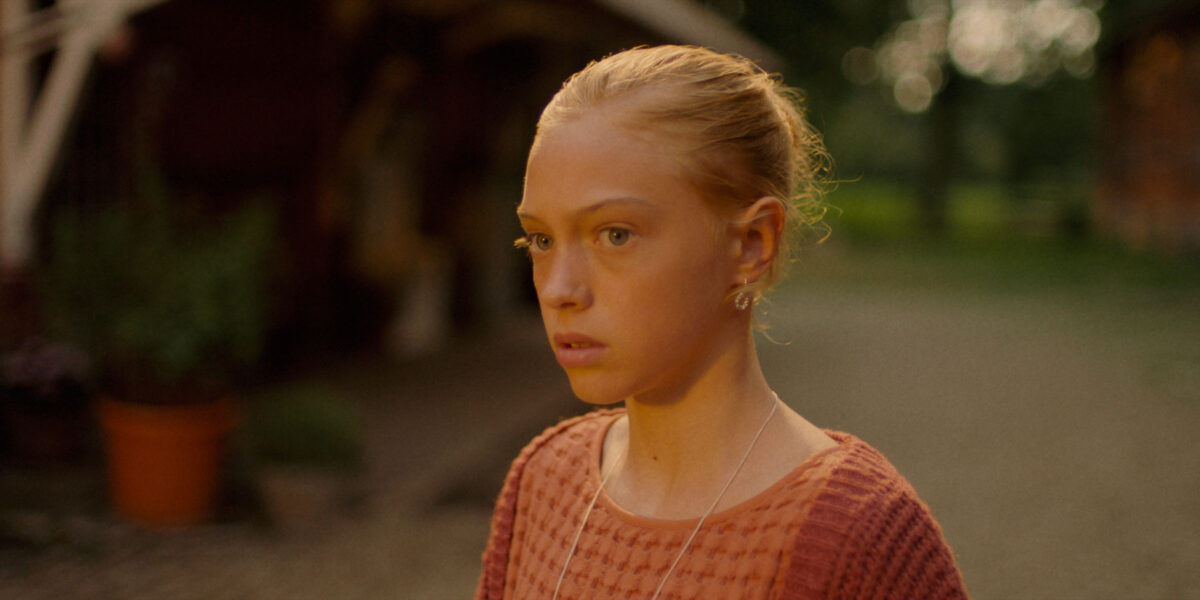
The duration of the shoot for season one was 66 days and 68 for season two. “It was a very fun shoot to do,” admits De Grande. “Season one and two were both very nice experiences. We had a very good crew. There were no conflicts on set and everything went smoothly. The collaboration with the directors on season one was very nice. Even though they were both very different in their approach. It was interesting for me to adapt to both of them, and to have that change up from Lenny to Frank during the shoot. Season two was interesting because half the crew were the same as season one. The collaboration with Frank was super smooth because we’d already worked together on season one and so knew each other better. The communication was even more efficient between us. We knew each other’s taste and our workflow. It’s always nice working with Lenny and Frank.”
“For season two, we also had three different time periods again,” continues De Grande.“Of course they were different and so we had different lenses too. It was still the same concept of two different sets, but this time I used the Canon K35s for the flashback scenes, combined with the same Leica Summicron lenses for the court. The very early flashbacks were happier moods, so soft spring colours like yellow, orange and green, warmer tones and hard light. The second period was very blue and dark and low contrast, soft light. That was the main period of the show and that’s why I chose the Canons because they already have the softer, colder look in the lenses. It was a similar approach sitting down with the colourist and finding the LUTs for each time period.”
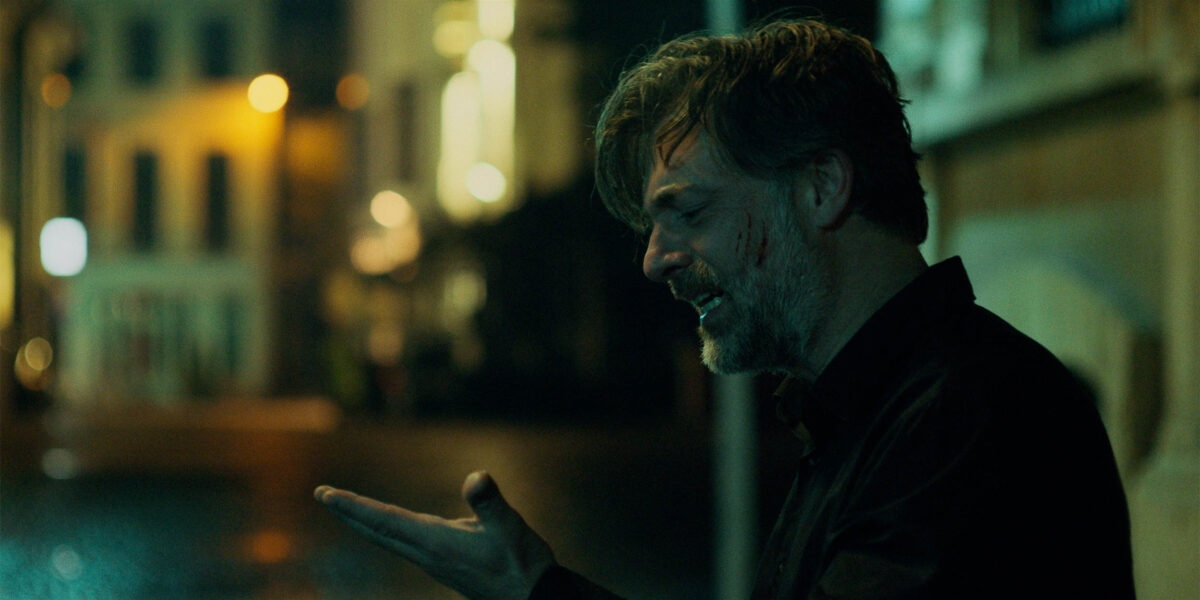
The biggest challenge for season 2 for De Grande was fighting the weather conditions to maintain the looks. “We were actually very unlucky with that,” he explains. “We had a lot of (unwanted) hard sunlight during the shoots of the blue period, where the light was always supposed to be soft. And on the other hand, for almost all the day EXTs for the warm and sunny period, we had rainy and cloudy weather; which made it very hard to create the looks we wanted on EXT scenes.”
De Grande was given lots of creative freedom on both seasons. “For example, when making the mood boards, the directors gave me freedom to basically come up with the main idea myself,” explains De Grande. “They of course would have feedback, but they gave me carte blanche to come up with the colour palettes and style myself. Lenny gave me a few references, but they were very broad and general, as a starting point. Also, during the shoot they let me do my thing and in grading also. They would come visit here and there and they weren’t there the whole time. Frank wasn’t there at all in season two during the grading, but of course he gets to see the episodes before they are being mastered, so he can have the final check. I felt a lot of trust from both of them during prep, production and post, which is very fun for me.”
stills by PLAY4
By Oliver Webb
